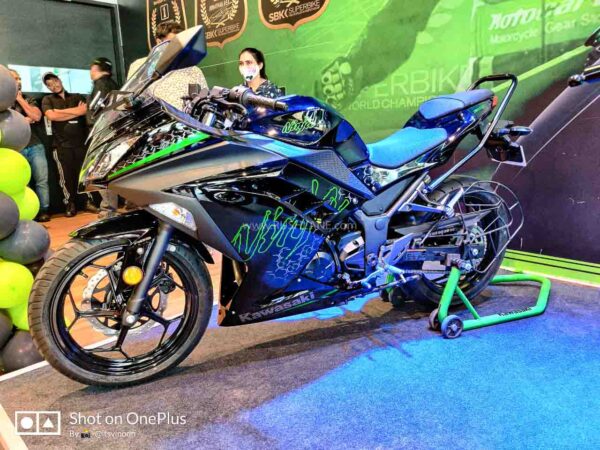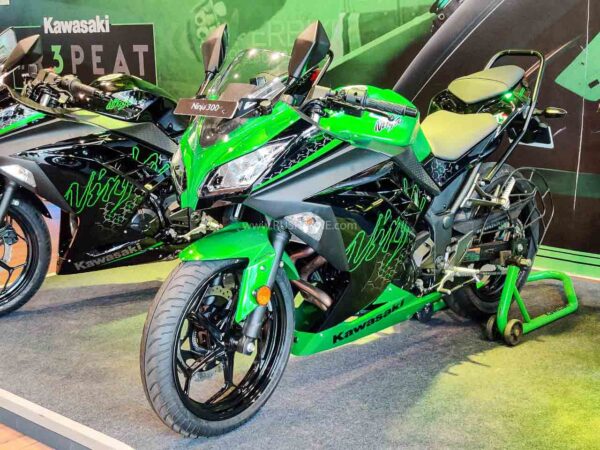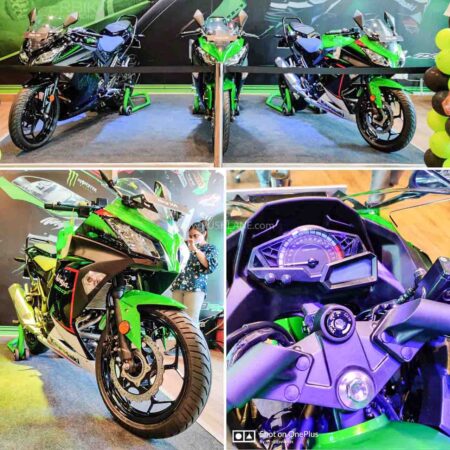
The updated Kawasaki Ninja 300 will rival the likes of TVS Apache RR 310, Suzuki Gixxer SF250 and the upcoming KTM RC 390
Ninja brand of motorcycles from Kawasaki holds a very special place in the hearts of all speed-loving biking enthusiasts from India. The updated Ninja 300 has started reaching dealerships across the country.
In the latest pics, a dealership in India is shown formally revealing the latest iteration of baby Ninja. Its launch price has been set at Rs 3.18 lakh (ex-showroom) which is Rs 20,000 more than the previous BS4 model. On road Mumbai price is Rs 3.68 lakh.

Overall Styling
The updates on the new Ninja are very limited, subtle and only limited to minute cosmetic variations. In terms of design, there is not much difference between the BS6 and BS4 models. Most design elements of the previous version of Ninja 300 have been carried forward to the recently launched iteration of the bike.
This includes a twin-pod headlight cluster, a muscular fuel tank, split-style seats, aggressive split headlamps, a chrome heat shield on the muffler, upswept exhaust and front blinkers on the fairing. The unveiling at dealership and a short video walkaround of the new Kawasaki Ninja 300 can be seen below. Video is credit to Vinod Nareshan.
Large ventilation holes on Ninja 300 are inspired by the brand’s flagship ZX-14R. It also gets three new colour options which give the motorcycle a fresh appeal. These are- Lime Green, Candy Lime Green and Ebony.
The first one is our pick since it gets a white engine cowl on its underbelly with red accents which are definitely the highlight to watch out for in the new Ninja 300. The riding stature is as usual leaning forward and it sports a minimalist design at the tail section.
Mechanical Specs
Mechanically, the new Ninja 300 is every bit identical to its predecessor. It is built on a tube diamond steel frame which is suspended on 37 mm telescopic forks at front and a preload-adjustable mono-shock at rear.

Stopping duties are carried out by 290mm and 220mm petal disc brakes at front and rear with power delivered by dual-piston calipers on both ends. Safety net is provided by dual-channel ABS as standard. It retains the semi-digital instrument console.
Coming to its powertrain, the faired race machine draws power from a BS6 compliant 296cc, parallel-twin, liquid-cooled engine that could push out 38.4 bhp of power at 11,000 rpm and 27 Nm of peak torque at 10,000 rpm. It is paired with a 6-speed gearbox with a slip and assist clutch for quicker and smoother gear shifts. The same engine-gearbox combination is also likely to be offered in Versys X300 which is expected to be the Japanese bikemaker’s next big launch.

